Looking to buy skis? You’ve got two main options: gear from big box stores or compact alternatives like Snowfeet*. Here’s the deal:
- Big box stores (like Dick's) offer a huge selection of long skis (5–6 feet), well-known brands, and competitive pricing. But they’re bulky, costly (up to $1,500 for a full setup), and require specialized boots and fittings. They’re great if you want in-person advice and traditional gear but can feel overwhelming for beginners.
- Snowfeet* flips the script with short skis (38–120 cm) that work with regular winter boots. They’re lightweight, easier to store, and cost less ($150–$690). Perfect for casual skiers or those new to winter sports. However, they’re primarily sold online and require a slightly different skiing technique.
Quick takeaway: If you want convenience, variety, and traditional gear, go big box. If you’re after portability, simplicity, and a lower price tag, give Snowfeet* a shot. Let’s break it down further.
10 Mistakes To Avoid When Buying Ski Gear!!
1. Big Box Sporting Goods Stores
Let’s take a closer look at how traditional big box sporting goods stores stack up in the ski gear market. Retailers like Dick's and Big 5 have been major players for years, offering a wide range of skiing equipment at prices that appeal to a broad audience. But, as with any model, there are pros and cons to consider.
Product Variety
Big box stores are known for carrying a broad selection of ski gear from well-known brands like Salomon, Rossignol, and K2. Whether you’re a beginner looking for an affordable starter package or a seasoned skier searching for high-performance gear, these stores aim to cover all the bases.
In fact, the mass market these retailers dominate brought in over 68% of U.S. skiing and snowboarding revenues in 2023. Their offerings are tailored primarily to budget-conscious shoppers, focusing on gear with basic features that meet the needs of most recreational skiers.
Pricing
One of the big draws of these stores is their pricing strategy. Thanks to their massive buying power, they can negotiate lower costs with suppliers, allowing them to offer competitive prices and even low-price guarantees on entry-level ski packages.
A common practice here is selling "special make-up skis" (SMUS), which are skis with unique designs made specifically for these retailers. This tactic helps them avoid direct price comparisons with specialty shops.
For reference, traditional ski packages at big box stores typically range from $300 to over $1,000. However, when you add in boots - often sold separately - the total can easily exceed $1,200–$1,500 for a full setup. And that’s before you even think about the hassle of transporting all that gear.
Portability
Here’s where traditional gear can be a bit of a pain. Skis sold at these stores are usually 5–6 feet long, making them awkward to lug around and store. Transporting them often requires roof racks, ski bags, or other specialized carriers. If you’re ordering online, expect higher shipping costs, and once you get them home, you’ll need a decent amount of storage space.
This is where newer, more portable options like Snowfeet* really shine, offering a compact alternative to the bulkiness of traditional skis.
Customer Service
One of the clear advantages of shopping at a big box store is the in-person experience. You get to see, touch, and even try out equipment before you buy. Many locations also offer basic fitting services, and their staff is often trained to help guide you toward the right gear for your needs. While it might not match the expertise of a specialty ski shop, it’s a convenient option for most shoppers.
2. Snowfeet* Products
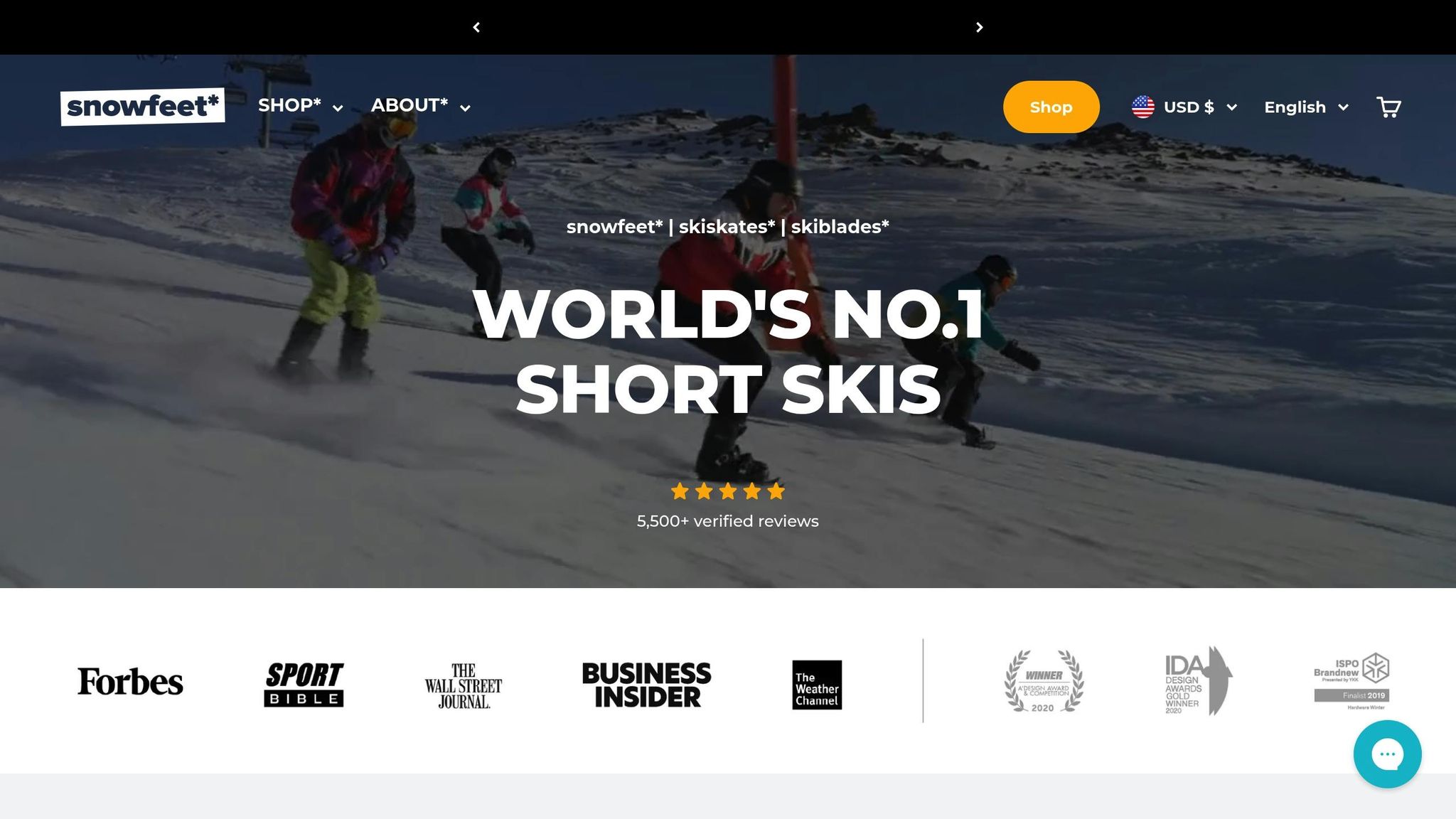
Snowfeet* has shaken up the winter sports scene with their short skis and skates, offering a fresh take on traditional gear.
Product Variety
Unlike big retailers with endless options, Snowfeet* keeps it simple by focusing on a niche: short skis and skates. They’ve carved out their own corner of winter sports by creating gear that’s compact, versatile, and easy to use. Their lineup includes:
- Snowfeet* Skiblades: Ranging from 65 cm to 99 cm, these are perfect for downhill skiing and carving.
- Skiskates: At 44 cm, these work seamlessly on both ski slopes and ice rinks.
- Mini Ski Skates: Just 38 cm long, these are so compact they can fit in your backpack.
One of the coolest features? You don’t need special boots. Snowfeet* products are designed to work with the winter footwear you already own - whether that's regular winter boots, snowboard boots, or even ski boots if that’s your preference. This eliminates the hassle of buying and lugging around extra gear.
Pricing
Traditional ski setups can cost a small fortune - think $400 to $800, and that’s before you even factor in the cost of specialized boots. Snowfeet* flips the script with pricing that’s way more accessible. Here’s the breakdown:
- Mini Ski Skates: Starting at $150.
- Snowfeet* Skiblades: Between $450 and $490.
- Longest Short Skis: Topping out at $690.
Not only are these prices easier on your wallet, but you’re also getting gear that’s lighter, more portable, and simpler to use. Plus, their customer support ensures you’re never left hanging.
Portability
If you’ve ever wrestled with traditional skis, you know they’re a pain to transport - most are 5 to 6 feet long and require roof racks or special storage. Snowfeet* products? They’re compact enough to toss in a backpack. No roof racks, no awkward storage solutions - just grab and go.
Customer Service
Snowfeet* makes the buying and learning process as smooth as a fresh layer of powder. Their website is packed with resources like sizing guides, instructional videos, and U.S.-standard sizing charts. Got questions? Their email and live chat support teams are ready to help. Plus, with a satisfaction guarantee and return policy, trying Snowfeet* gear is a no-risk move. Even if you’re new to winter sports, their easy-to-follow guides make getting started a breeze.
sbb-itb-17ade95
Pros and Cons
Let’s break down how big box sporting goods stores stack up against Snowfeet* products:
| Criteria | Big Box Sporting Goods Stores | Snowfeet* Products |
|---|---|---|
| Product Variety |
Pros: Huge selection from brands like Rossignol, K2, and Salomon; convenient one-stop shopping. Cons: Overwhelming choices, mostly focused on traditional long skis (5–6 feet); limited focus on newer designs. |
Pros: Specializes in short skis (38–120 cm) with innovative designs that work with regular winter boots; tailored for today’s skiing trends. Cons: Smaller range compared to big box stores. |
| Pricing |
Pros: Frequent sales and financing options. Cons: Full setups run $400–$800+, plus $200–$400 for boots. |
Pros: All-in pricing from $150 to $690, with no need for specialized boots - offering better value overall. Cons: Fewer sales compared to big box discounts. |
| Portability |
Pros: Immediate availability in-store. Cons: Traditional skis require roof racks and dedicated storage. |
Pros: Compact enough to fit in a backpack - great for air travel or spontaneous trips; no roof racks needed. Cons: May need to be ordered online, depending on your location. |
| Customer Service |
Pros: In-person help; the ability to test products before buying. Cons: Staff may lack deep knowledge, push for sales, and offer limited post-purchase assistance. |
Pros: Expert advice on short ski technology; online guides and resources; satisfaction guarantee with return options. Cons: Support is primarily online, lacking face-to-face interaction. |
| Learning Curve |
Pros: Familiar gear that ski schools often use. Cons: Longer skis can feel intimidating for beginners and have a steeper learning curve. |
Pros: Short skis are easier to learn on, making them beginner-friendly and less daunting. Cons: Requires adapting to a different skiing technique. |
| Versatility |
Pros: Designed for specific conditions and skill levels. Cons: Typically limited to ski slopes; may need different gear for various activities; seasonal storage can be a hassle. |
Pros: Works on slopes, in parks, on hiking trails, and even in backyards; easy year-round storage. Cons: May not appeal to purists looking for a traditional skiing experience. |
This comparison highlights the streamlined, modern approach of Snowfeet* versus the more traditional offerings at big box stores.
Big box stores are great if you want a wide variety of traditional gear and the convenience of walking out with everything you need. But that variety often comes with higher costs - not just for skis but for boots, bindings, and other accessories. Plus, traditional setups can feel bulky, especially when it comes to storage and transportation.
Snowfeet* flips the script. By focusing on simplicity and modern design, they make skiing more accessible. Their compact, lightweight products are easy to carry, store, and use, especially if you’re new to winter sports. And let’s not forget the cost savings - no need for pricey specialized boots.
Portability is a game-changer with Snowfeet*. Forget about roof racks or struggling to find storage space. These compact skis fit right in your backpack, making them perfect for spontaneous trips or even air travel.
For beginners, good customer support can make all the difference. Big box stores might overwhelm you with endless options and upselling, but Snowfeet* takes a more focused approach. They provide detailed resources, expert advice, and a satisfaction guarantee, giving you the confidence to try something new without the risk of buyer’s remorse.
Conclusion
After comparing options, it’s clear that while big box stores offer a variety of choices, Snowfeet* stands out for its portability and ease of use. The decision ultimately comes down to your personal preferences and needs. Big box stores let you test gear in person and take it home immediately, but traditional skis can be bulky, harder to store, and inconvenient to transport. That’s where Snowfeet* steps in as a refreshing alternative.
Snowfeet* challenges the idea that longer skis are always better. With their compact size and affordable price, they’re a game-changer for casual skiers, beginners, and anyone who values convenience. Plus, they’re designed to work with your regular winter boots, making them super easy to use. The shorter skis not only simplify the learning process but also enhance safety - ideal for those just starting out or looking for something more low-key.
If you’re a fan of activities like ice skating or inline skating, transitioning to Snowfeet* is a breeze. Their design lets you glide through narrow trails and groomed paths effortlessly - something traditional long skis just can’t do.
While traditional skis cater to specific skiing styles, Snowfeet* brings winter sports into a new era of accessibility and fun. For many American winter enthusiasts, especially beginners or those seeking versatility, Snowfeet* offers a simpler, more enjoyable way to hit the snow. It’s all about combining ease, performance, and the joy of exploring the outdoors.
In short, Snowfeet* is shaking up the winter sports scene by putting portability, simplicity, and fun front and center.
FAQs
How does skiing with Snowfeet differ from using traditional long skis?
Skiing with Snowfeet is all about staying light on your feet. With a more upright posture and an emphasis on quick, sharp turns, they’re ideal for weaving through tight spots like forest trails or busy slopes. On the other hand, traditional skis call for a wider stance and are built for long, smooth turns, giving you better stability when speeding down open terrain.
What makes Snowfeet stand out? They're incredibly easy to use, super portable, and way less bulky than regular skis. If you want the rush of skiing without lugging around heavy gear, Snowfeet offer a lightweight and exciting way to hit the snow.
How do Snowfeet products compare to traditional skis in terms of cost and long-term value?
Snowfeet products provide a budget-friendly and convenient alternative to traditional skis. With prices ranging from $140 to $650, they’re much easier on the wallet compared to standard ski gear, which can set you back $400 to $1,200 or more. Plus, their lightweight and compact design means they’re simple to carry around and don’t require expensive storage or maintenance.
On top of that, Snowfeet are super easy to use and versatile, making them perfect for beginners or casual skiers who want to hit the slopes without breaking the bank or committing to bulky gear. Choosing Snowfeet gives you an affordable, hassle-free way to enjoy winter sports - a choice that could save you money and effort in the long run.
Are Snowfeet suitable for all types of skiing conditions, or do they work best in specific environments?
Snowfeet are built to handle a variety of skiing conditions, making them a great pick for winter sports lovers looking for something compact and fun. Thanks to their lightweight design, they glide effortlessly on groomed trails, cruise down gentle slopes, and even tackle powdery terrain. Whether you're coasting through trails in the Midwest, navigating icy East Coast slopes, or enjoying wide-open powder fields out West, Snowfeet give you a portable, easy-to-use alternative to traditional skis.
Unlike traditional ski gear that can be bulky and terrain-specific, Snowfeet keep things simple and convenient. You can explore different environments without worrying about swapping equipment. They’re perfect for quick getaways or spur-of-the-moment adventures, offering a practical and fun way to enjoy the slopes without all the extra hassle.







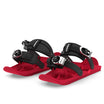
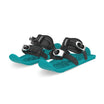












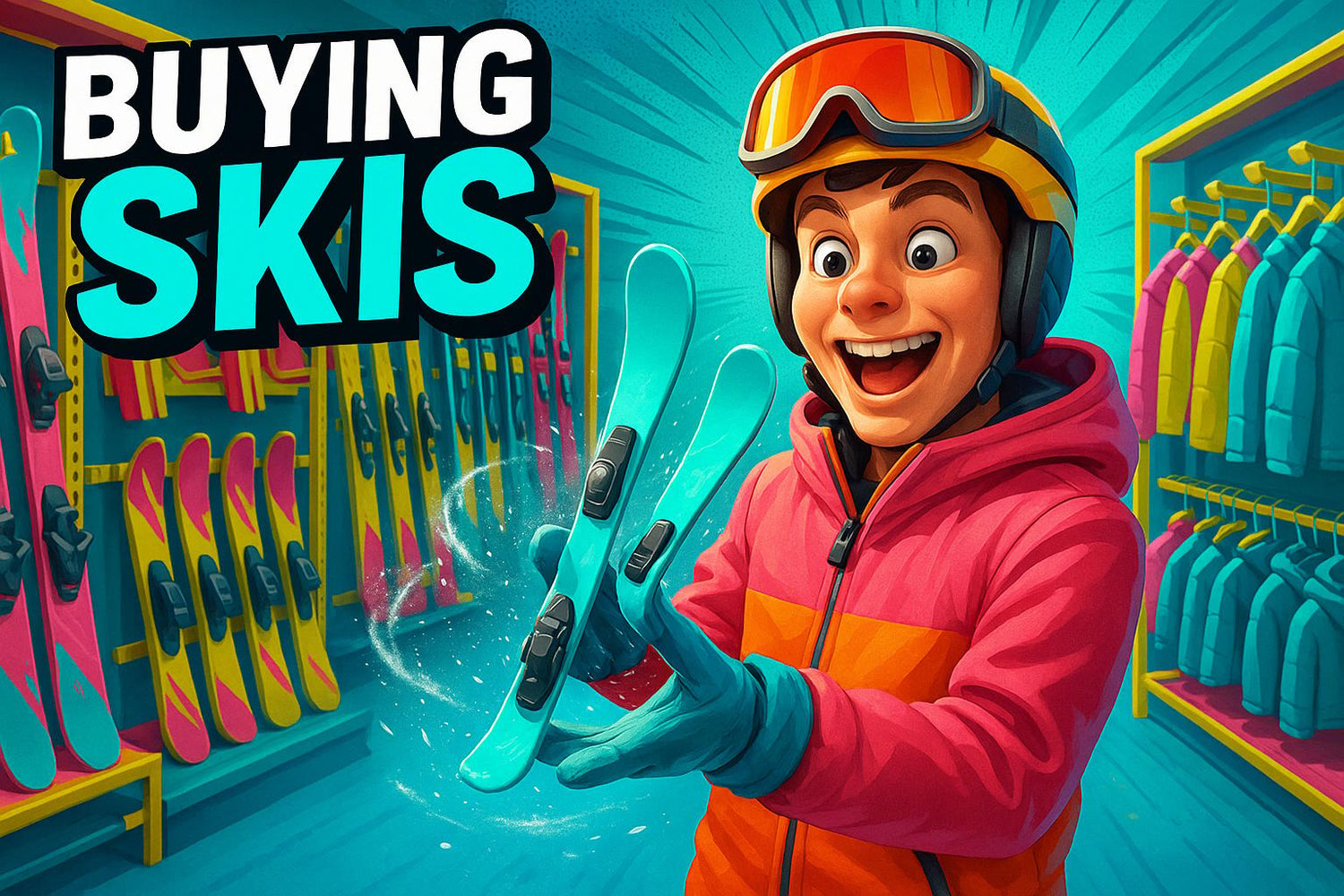
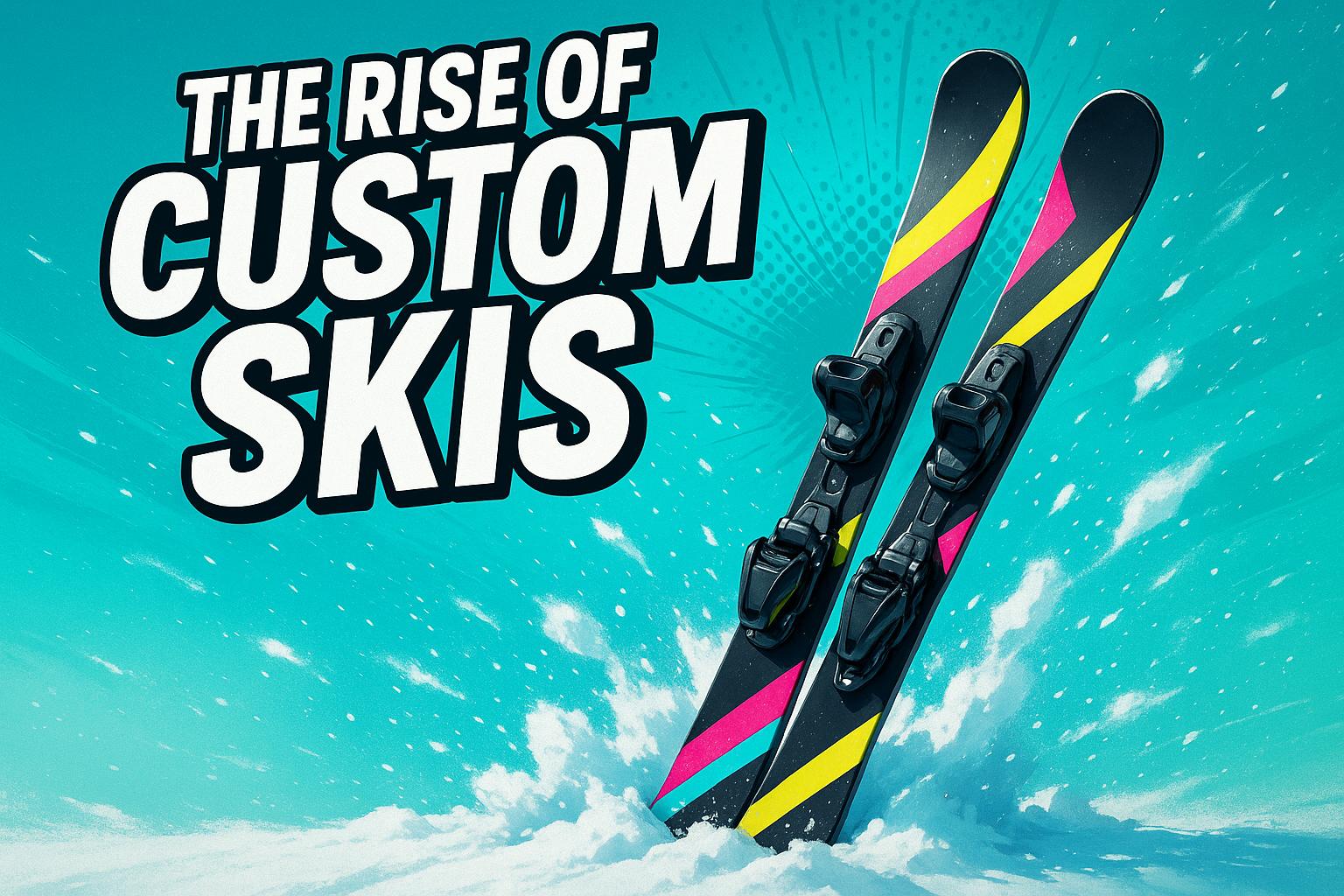
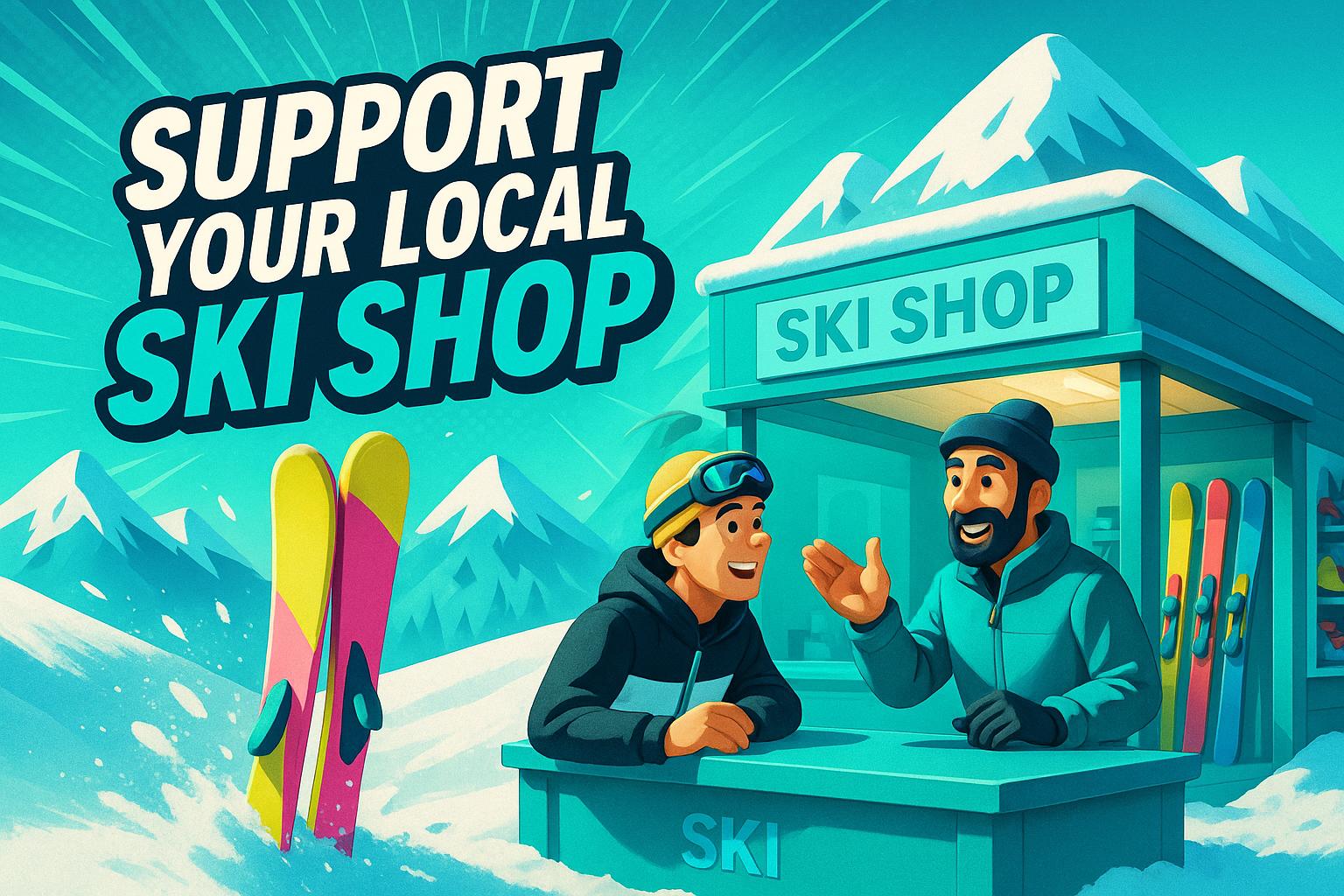




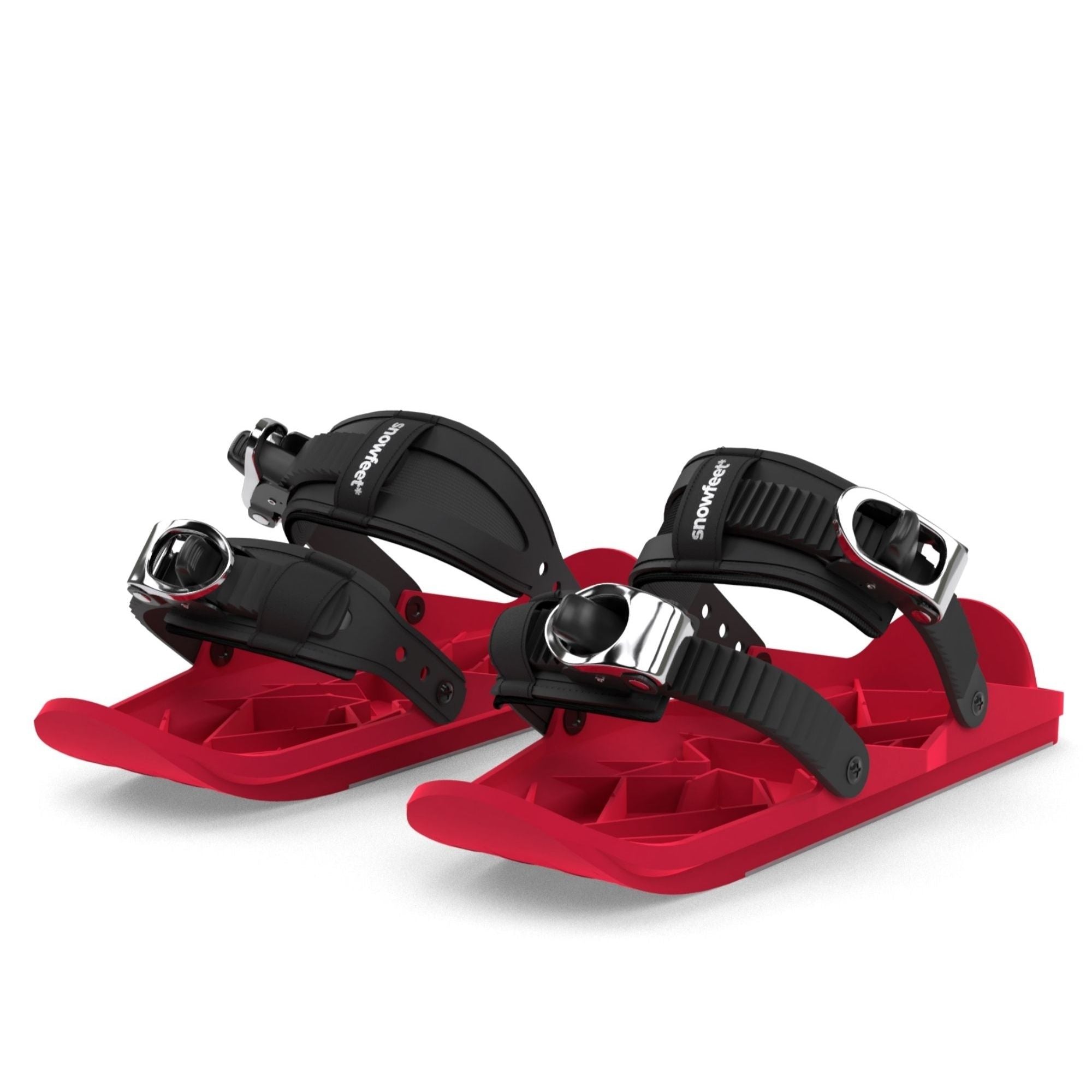
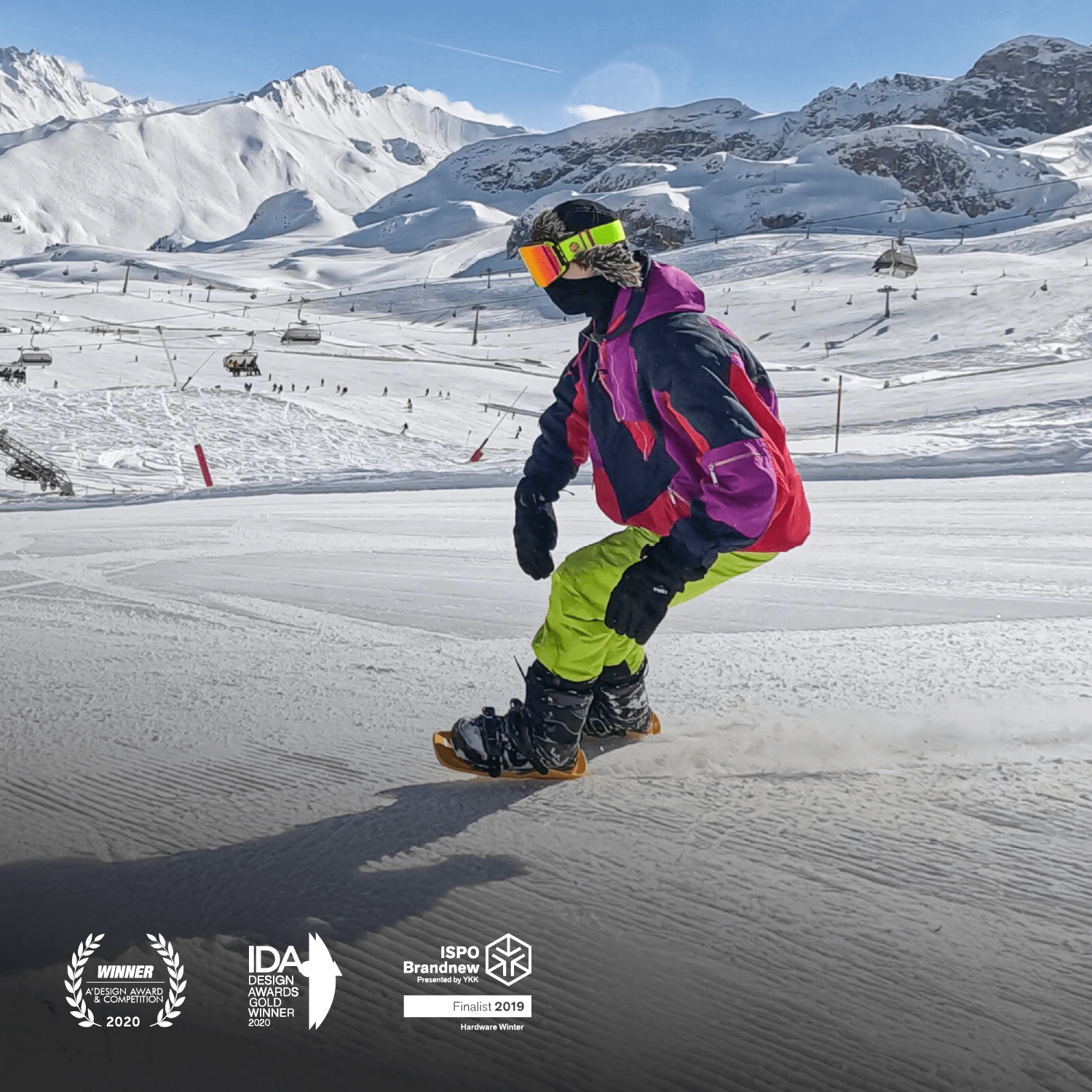




Leave a comment
This site is protected by hCaptcha and the hCaptcha Privacy Policy and Terms of Service apply.